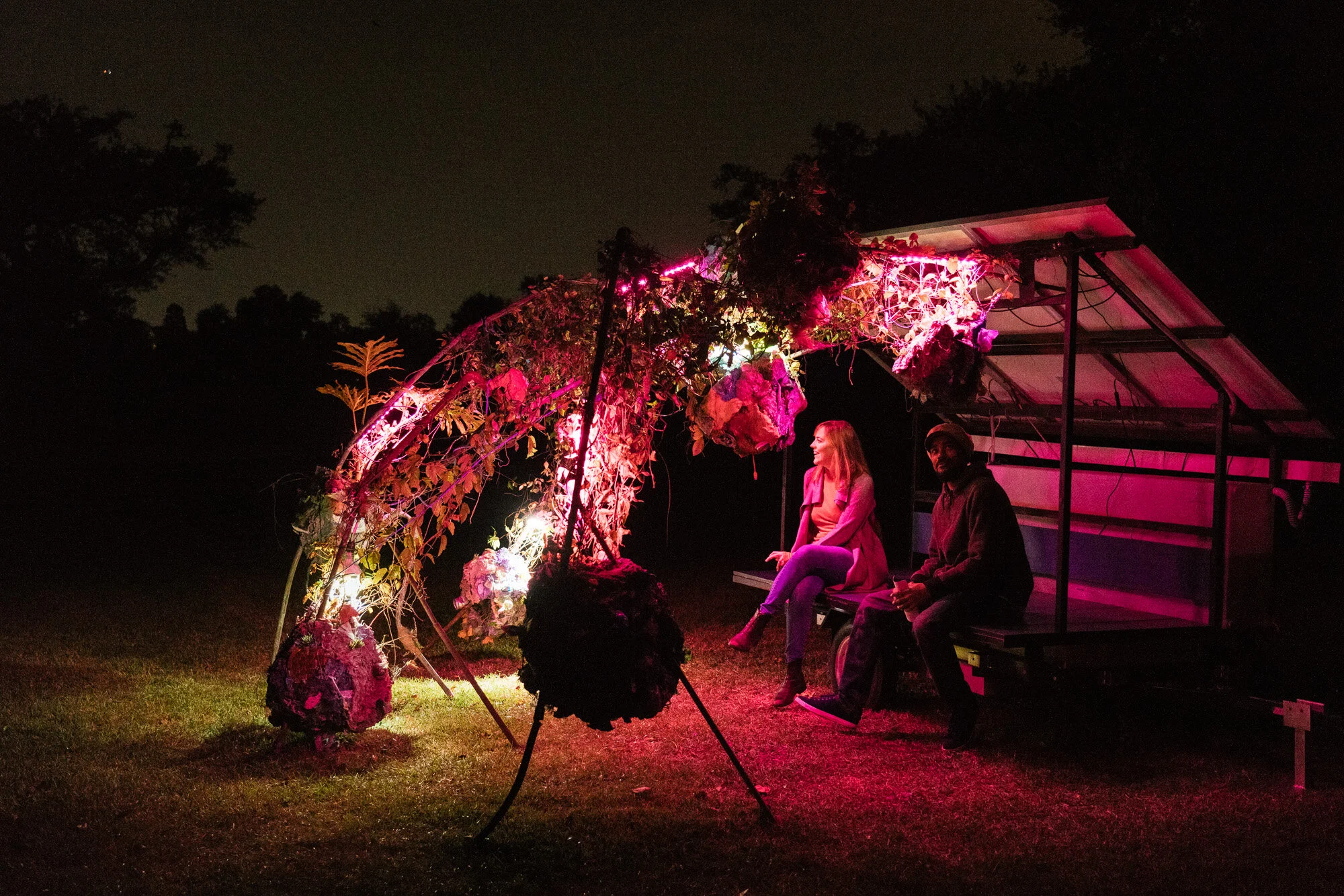Becoming with: A rhizomatic solar cart
Metal, wire, plastic, cement, sugarcane, oops paint, soil, Louisiana native and locally adapted vines, LED grow-lights + solar panels, batteries and electrical components, rain-water collection tank, and water pump
2019
This installation is a nomadic hybrid ecosystem rooted in the past, present, and future of Southern Louisiana that explores what it means to live here in a time of global warming.
To see more images of how the solar cart moves from place to place click here
To see more images of the solar cart in situ with the sculptures fully installed click here
One half of the structure harvests solar energy and rainwater that will feed the plants grafted off the other side of this portable renewable resource. The installation combines practical sustainable ways of reducing the energy demands of our daily lives with imagined ecosystems that will colonize our cultural detritus after we have made this place unlivable if we don’t change course.
The installation moves throughout the city of New Orleans powered by humans, so that the moving of the piece also becomes a performance piece and an important part of the process.
To view the open source plans for this project, click here
“Becoming with” is a term borrowed from Donna Haraway, the postmodern feminist theorist, who believes that the world is a “knot in motion,” in which humans are not just connected to but also inextricably and symbiotically enmeshed with all living things. The materials in the sculpture reference a history of Louisiana over time: mud mixed with sugarcane, over pipelines, embedded with plastic, and planted with native and locally adapted vines. These conglomerate structures become like palimpsests, tracing a history of extraction and exploitation to reveal a future where plants are growing out of our waste products. At the same time the installation is powered by renewable resources, a tangible step forward if we are to divest from fossil fuels and shift toward a livable future for generations to come. This installation—which requires several people to come together to move it—becomes its own organism, gathering water and energy and creating a space that can also be adapted and changed over time.
In this iteration of “Becoming with,” the solar cart is welded to a sculptural dystopian garden, but the structure is meant to be rhizomatic: it is nomadic, nonhierarchical, and entangled with many things. It can connect to and power many different structures and activities.
“Becoming with” invites the audience to engage with the solar cart, spending time exploring the garden, sitting on the bench in the heart of the structure and contemplating your place in our fossil-fuel addicted culture.
If you had a rhizomatic solar cart, who would help you push it, what would you choose to power and where would it be located?

